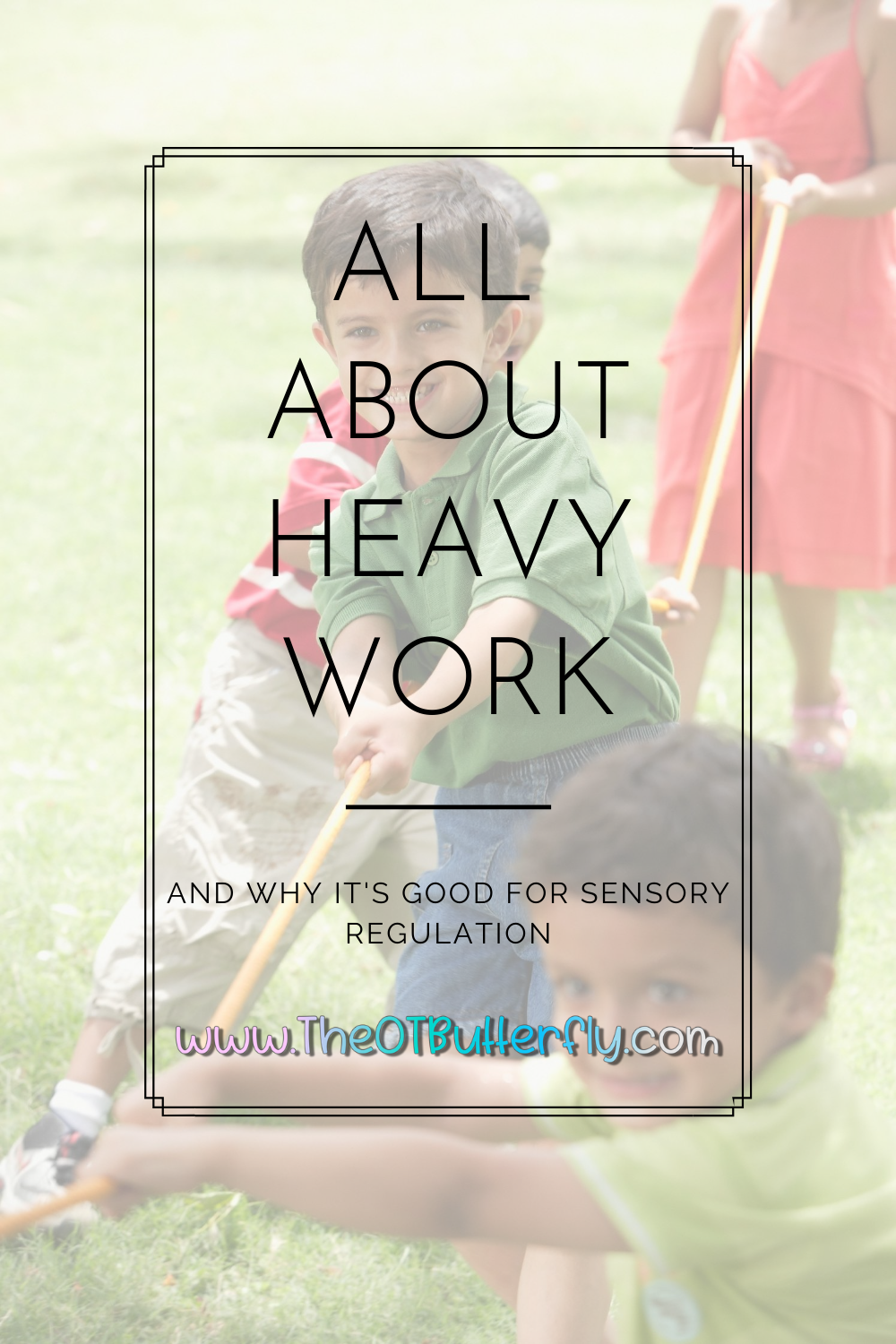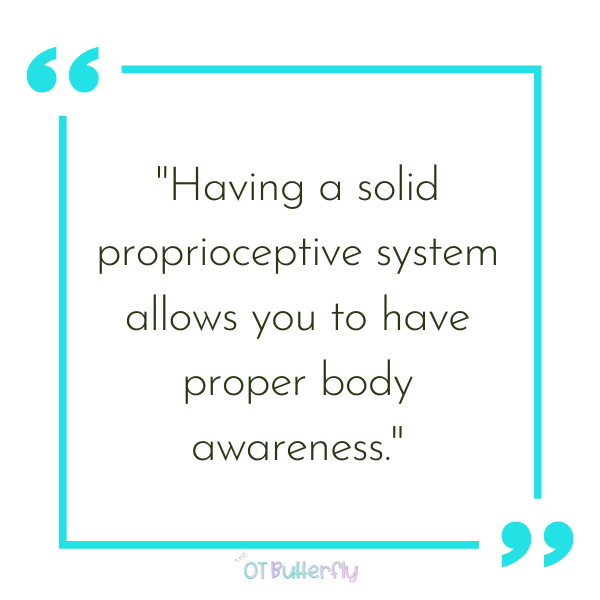Get your FREE sensory profiles cheat sheet >>click here<<
Proprioceptive Input: The Magic Pill for Sensory Regulation
What exactly is proprioceptive input and why do Occupational Therapists keep talking about it? If you’ve never heard of the term proprioceptive input, you might have heard of “heavy work” which is the more commonly used term. Keep reading to find out what proprioceptive input is, and why it’s probably the answer to some of your sensory regulation questions.
What is Proprioceptive Input?
Anytime your muscles, tendons or joints receive active input against gravity, you are activating the proprioception system and receiving proprioceptive input.
Proprioceptive input includes movements like: pushing, pulling, climbing, lifting, carrying and any weight-bearing activities.
Why is Proprioceptive Input important?
The input to your muscles, tendons and joints provide your nervous system with information on where your body is located in space. It’s sort of the like “you are here” sign on a mall directory.
Having a solid proprioceptive system allows you to have proper body awareness in order to:
- Get dressed without looking in a mirror
- Learn a new dance routine (where are my tik-tok peeps?)
- Keep a safe and socially appropriate distance from peers when we stand in line or play on the playground (in a non social-distance world)
- Walk through tight or busy spaces without knocking into things or people.
- Know how much strength or force to use when pouring out a full carton of milk
Aside from having a good sense of your body, proprioceptive input provides calming, organizing and regulating input to your nervous system.
This means that it plays an important role in combating dysregulation. When someone displays high levels of arousal (hyperactive, impulsive, aggressive, etc) providing proprioceptive input can help bring down their arousal to a just right, regulated state.
There is little to no documentation on anyone being over sensitive to isolated proprioceptive input.
In other words, [safe, within child’s physical capabilities and adult supervised] heavy work or proprioceptive input is good for everyone and is quite literally the answer to all your regulation problems.
Anxious child? Heavy work.
Sensitive to touch? Heavy work.
Hyper/silly from too much movement? Heavy work.
Can’t focus or sit still? Heavy work.
Aggressive child? Heavy work.
How Do I know if My Child Needs more Proprioceptive Input?
As stated above, it’s rare (and I have yet personally to witness a case) to have anyone who is sensitive to proprioceptive input. It’s really a form of exercise and any kind of active movement is generally good for everyone (within safe limits and supervision, of course!)
But if you notice any of the following signs, your child might benefit from a proprioceptive rich (heavy work) sensory diet.
- Constantly bumping into other people or furniture
- Jumping and crashing often, especially from unsafe heights
- Stomping feet while walking
- Chewing on nails, sleeves of shirt
- Preferring to sit in a kneeling or squatting pose rather than cross legged
- Squeezing others or asking to be squeezed
- “Hyperactive”, extremely wiggly and constantly moving
- Enjoys “rough housing”, wrestling with others
- Clumsy and uncoordinated when learning new dance routines or exercises
Download this free PDF that details all this information, and more about which kids benefit from more heavy work.
What are some ways to get Proprioceptive Input?
Any active movement of muscles, tendons and joints activates the proprioception system. The jaw houses a high proportion of proprioceptive receptors, so many sucking and chewing motions provide calming effects.
Other ideas for proprioceptive input include:
- Sucking thick smoothie through a straw
- Chew Necklace
- Use a heavy lap pad for car rides, watching movies, or other focused seated activities.
- Crunchy, chewy snacks like dried fruit or jerky during times of focus
- Cosmic Kids Yoga (Youtube)
- Gorilla Gym (door frame suspended equipment)
- House chores: laundry, making bed, carrying in groceries, taking out trash (for older children)
- Making a pillow fort
- Playing tug of war
- 30 second self initiated muscle tensing (e.g. make a fist and squeeze hard, tense arm muscles, leg muscles, face muscles all at once and hold for 30 seconds)
- Wall Pushes
- You can also check out this excellent blog post on 10 fun heavy work play ideas
RELATED POSTS









